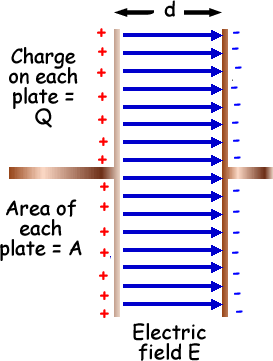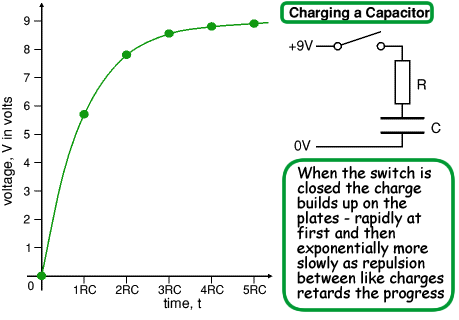Capacitance - The Parallel Plate Capacitor
It is also proportional to the permittivity of the dielectric ( The capacitance of a parallel-plate capacitor is therefore given by:
When there is a difference in electric charge between the plates, an electric field is created in the region between the plates. The electric field that created is proportional to the amount of charge that has been moved from one plate to the other. This electric field creates a potential difference V between the plates of this simple parallel-plate capacitor. V = Ed |
Follow me...
|







